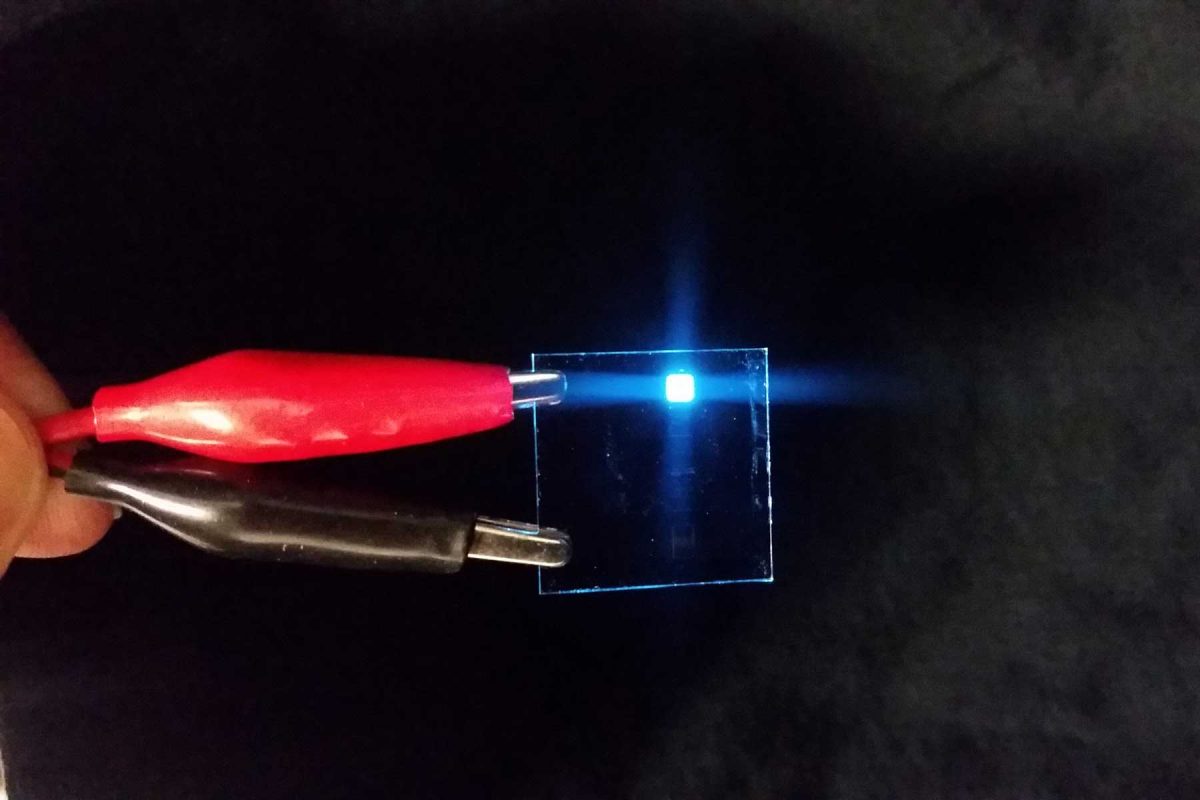
Scientists’ discovery could mean less-expensive smartphones, TVs
Iridium has been generating light and color for screens on smartphones and TVs, but it’s the rarest metal on Earth; USC scientists found a way to make copper work.
USC chemists have found a cheaper way to light up smartphone and TV screens, which could save manufacturers and consumers money without affecting visual quality.
Copper is the answer, according to their study, published Friday in the journal Science.
“The current technology that is in every Samsung Galaxy phone, high-end Apple iPhone and LG TV relies on iridium compounds for the colors and light on organic LED screens,” said Mark Thompson, a chemist at the USC Dornsife College of Letters, Arts and Sciences.
“We have been using iridium because you get a highly efficient light emission, but it is the rarest naturally occurring element on Earth,” Thompson said. “One of our challenges has been to come up with an alternative that is more abundant.”
Prior attempts to generate a copper-based organic LED, or OLED, failed. The copper complexes in those studies had weaker structures. The molecules were unstable, with shorter lifetimes than the iridium compounds.
Iridium’s link to dinosaurs
Copper definitely solves that problem since it is a plentiful metal worldwide. Iridium, on the other hand, is found in only a few places — mostly South Africa and parts of Asia.
The most widely accepted hypothesis that explains iridium’s scarcity and its origins is that it traveled here on a meteor — the same one that wiped out the dinosaurs 65 million years ago.
Unless another meteor like that hits Earth, iridium will continue to dwindle in supply. Demand for it is only increasing as smartphones, TVs and other devices that feature LED screens gain popularity.
OLEDs have come to replace LED LCD screens. In an OLED screen, each pixel generates light, while in the LCD screens, pixels are illuminated by an LED backlight.
Blue chemistry
Besides its scarcity, iridium has another drawback for LED technology that has perplexed chemists for more than two decades: weaker molecules for generating blue light.
When the molecules from the iridium compounds are excited, they generate two of the LED screen’s primary colors — red and green — very efficiently, quickly, and in devices that give very long operational lifetimes, said Thompson. His lab engineered the iridium-based red and green molecules.
The third required color, blue, has been the bane of OLED technology because blue emissive OLEDs have a short lifetime. Thompson explained that the bonds within the blue molecules tend to break down. Blue molecules also require more electricity to energize them. Since blue is among the primary colors for LED, its poor performance can affect colors that you see on a screen that contain any blue.
Less-expensive smartphones and TVs: Rigid copper compound
Thompson’s team appears to have solved that, too, with their new copper compound, a more rigid molecular complex than the prior, weaker copper compounds. The new compound’s rate of light emission matches iridium’s, so the energy is converted efficiently into light and color, the chemists found.
“Our paper lays out the basic design rules for obtaining iridium-like emission efficiencies out of copper, with colors ranging from blue to green and yellow,” said Rasha Hamze, the study’s lead author and a USC Dornsife Department of Chemistry alumna. “Achieving efficient blue emission out of copper compounds opens up entirely new possibilities for tackling the problem of short lifetimes in blue devices.”
Hamze recently began working for Universal Display Corp., which develops, manufactures and services OLED technologies.
The team at USC Dornsife has submitted a patent application for their copper compound.
Thompson said that next, he wants to see if these rigid copper compounds could also lead to the creation of more energy-efficient lighting.